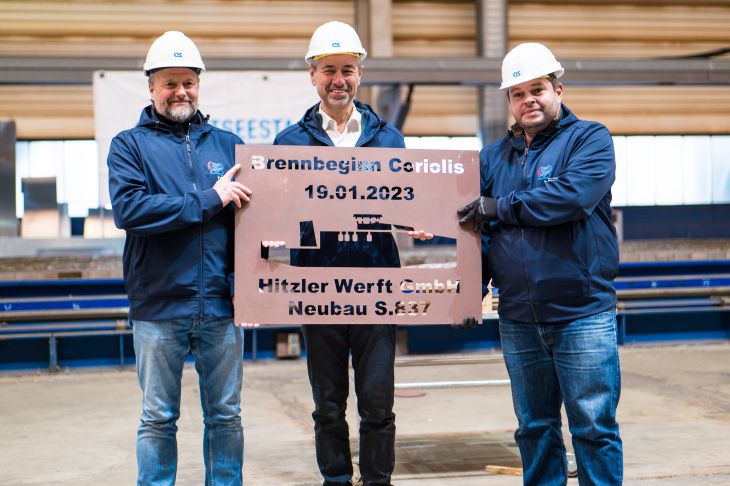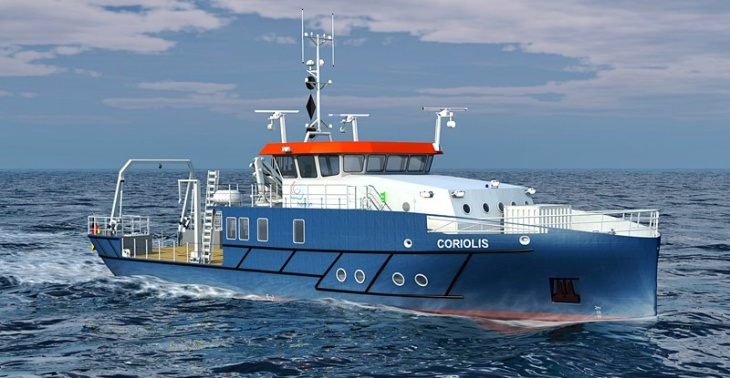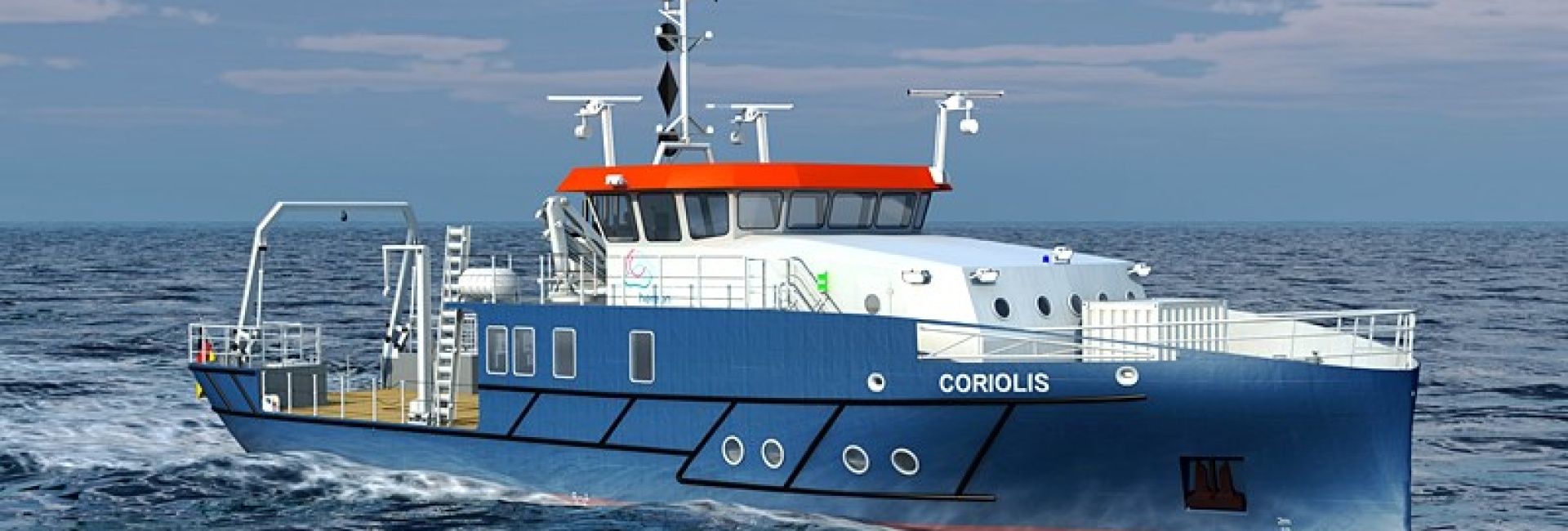Steel cutting for Coriolis
On behalf of the Hitzler shipyard, Ostseestaal GmbH & Co. KG yesterday made the first steel cut for the Coriolis. This marks the beginning of construction of the new Hereon research vessel.
Kick-off for the construction of the Coriolis: For the unique research vessel with climate-neutral hydrogen propulsion, Ostseestaal GmbH & Co. KG cut out the first steel plate yesterday, the so-called “Brennstart”.
The specialised company from Stralsund was commissioned by the Hitzler shipyard to produce all the steel elements for the hull of the Coriolis. These are delivered to the Lauenburg shipyard "just-in-time", i.e. according to need and construction stage. Ostseestaal specialises in the manufacture and delivery of custom-fit construction packages of steel for special shipbuilding . The company processes high-quality materials such as steel, stainless steel, aluminium and special alloys.
Yesterday's steel cut are to be used for the tank section of the ship.The fabrication and delivery of the steel components for this first section will take only four weeks.

The freshly burnt-out steel nameplate, presented by Ostseestaal to Volker Dzaak (centre) and the future Coriolis captains Heiko Gerbatsch (left) and Marco Schacht (right). Photo: Hereon/ Steffen Niemann
"I am very pleased that the construction of the Coriolis is now starting. The striking steelwork section which has been manufactured today is a promising start. There will be much to report in the coming weeks and months," said Volker Dzaak, project manager of the Coriolis.
To celebrate the day, Ostseestaal also made two special steel nameplates showing the ship's name, construction number and longitudinal view of the Coriolis. Michael Schultze (BU Manager/ Proxy Ostseestaal) handed over one sign each to Marek Klimenko (Owner Hitzler Werft) and to Volker Dzaak (Project Manager Coriolis, Hereon) with the two Coriolis captains Marco Schacht and Heiko Gerbatsch.
A world's unique research vessel
The Coriolis will cover a broad, interdisciplinary spectrum of coastal, materials, hydrogen and membrane research and set new standards in digitalisation. Thanks to its low draught, the research vessel will be able to navigate rivers as well as the North and Baltic Seas.

3D model of the Coriolis. Graphic: Hereon/ Hitzler Werft
For example, researchers will be able to determine which nutrients and pollutants enter the sea through rivers and how changing climatic conditions affect the coastal landscape. All research data obtained during a voyage can be retrieved in real time from the centre or shared directly with other ships and shore stations thanks to the technical equipment.
The innovative propulsion system consists of electric traction motors that can access various power storage units. One of these is a specially developed tank system in which hydrogen is stored in the form of metal hydrides. With this equipment, the possibilities of a purely hydrogen-powered engine are being explored on board. At the same time, it thus already enables emission-free shipping in stretches.
Further information
Contact
Institute of Coastal Environmental Chemistry
Helmholtz-Zentrum Hereon
Communication and Media
Helmholtz-Zentrum Hereon
